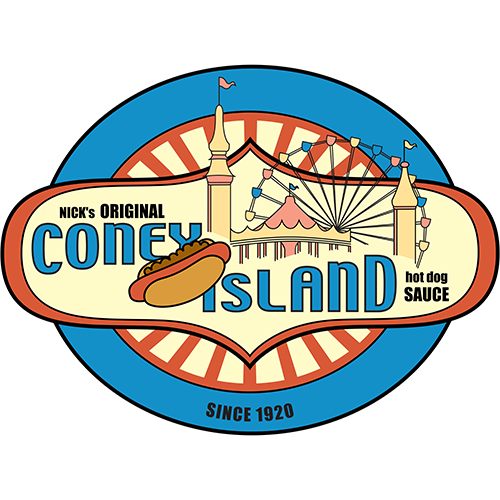HISTORY OF THE WIENER
The tale of the “Coney Island Hot Dog” begins in 1500-century-BC Babylonia—where Hammurabi was producing his famous Code. Historians say that ancient Babylonians were the first to stuff animal intestines with spiced meats. Sausages were later mentioned in Homer’s Odyssey (c. 800 BC). The Greeks called this food “orya,” and the Romans “salsus,” from which the word “sausage” is derived. The term “wiener” came from Vienna, which is spelled Wien in German.
[/cs_text][/cs_column][/cs_row][/cs_section][cs_section id=”” class=” ” style=”margin: 0px; padding: 0px; ” visibility=”” bg_color=”hsl(0, 0%, 100%)” parallax=”false”][cs_row id=”” class=” ” style=”margin: 0px auto; padding: 0px; ” visibility=”” inner_container=”false” marginless_columns=”true” bg_color=””][cs_column id=”” class=”” style=”padding: 0px; ” bg_color=”” fade=”false” fade_animation=”in” fade_animation_offset=”45px” fade_duration=”750″ type=”1/1″][cs_text id=”” class=”” style=”” text_align=””]THE WIENER BECOMES A FRANKFURTER
The immediate precursor of the American hot dog emerged in the 1850s when an influential—and eccentric—butcher in Frankfurt, Germany persuaded fellow sausage makers to curve the sausage slightly in order to resemble his pet dachshund. The sausage caught on and came to be known as the “frankfurter,” after the city in which it was developed.
[/cs_text][/cs_column][/cs_row][/cs_section][cs_section id=”” class=” ” style=”margin: 0px; padding: 0px; ” visibility=”” bg_color=”hsl(0, 0%, 100%)” parallax=”false”][cs_row id=”” class=” ” style=”margin: 0px auto; padding: 0px; ” visibility=”” inner_container=”false” marginless_columns=”true” bg_color=””][cs_column id=”” class=”” style=”padding: 0px; ” bg_color=”” fade=”false” fade_animation=”in” fade_animation_offset=”45px” fade_duration=”750″ type=”1/1″][cs_text id=”” class=”” style=”” text_align=””]THE FRANKFURTER COMES TO AMERICA
The Coney Island hot dog derived its name from Coney Island in Brooklyn, New York, where hot sausage sandwiches made their debut as America’s “fun food.” By the late 1800s Coney Island was fast emerging as the world’s largest and premier amusement area that featured a beach resort and thrilling amusement parks that drew large crowds from close-by New York City. The place attracted many immigrants who were anxious to make a living as food vendors.
[/cs_text][/cs_column][/cs_row][/cs_section][cs_section id=”” class=” ” style=”margin: 0px; padding: 0px; ” visibility=”” bg_color=”hsl(0, 0%, 100%)” parallax=”false”][cs_row id=”” class=” ” style=”margin: 0px auto; padding: 0px; ” visibility=”” inner_container=”false” marginless_columns=”true” bg_color=””][cs_column id=”” class=”” style=”padding: 0px; ” bg_color=”” fade=”false” fade_animation=”in” fade_animation_offset=”45px” fade_duration=”750″ type=”1/1″][cs_text id=”” class=”” style=”” text_align=””]CHARLES FELTMAN INVENTS THE “HOT DOG”
One such vendor was a German immigrant pie baker named Charles Feltman. After his bakery began to suffer from competition along Coney Island, his friends advised him to sell hot sandwiches instead. So in 1871 Feltman opened the first Coney Island hot dog stand, which featured “red-hot dachshund sausages.” The term “hot dog” was coined in 1901 by Hearst newspaper cartoonist Ted Dorgan, who drew a cartoon of warm barking dachshund sausages snuggled in rolls and garnished with mustard and relish. He could not spell “dachshund,” so he simply called the food “hot dog.”
[/cs_text][/cs_column][/cs_row][/cs_section][cs_section id=”” class=” ” style=”margin: 0px; padding: 0px; ” visibility=”” parallax=”false”][cs_row id=”” class=” ” style=”margin: 0px auto; padding: 0px; ” visibility=”” inner_container=”false” marginless_columns=”true” bg_color=””][cs_column id=”” class=”” style=”padding: 0px; ” bg_color=”hsl(0, 0%, 100%)” fade=”false” fade_animation=”in” fade_animation_offset=”45px” fade_duration=”750″ type=”1/1″][cs_text id=”” class=”” style=”” text_align=””]THE HOT DOG BECOMES A HIT
The hot dog was a hit in America from the very beginning. In his first year Feltman sold about 3,000 dachshund sausages in a milk roll. Hot dog sales exploded. As his business grew, he hired a helper named Nathan Handwerker, who eventually left to start his own hot dog business when Feltman upped the cost of a frank from 5 to 10 cents. Handwerker held the selling price of his franks to a nickel and eventually outstripped the competition, leaving “Nathan’s Famous” as the longest continuously running hot dog outlet in Coney Island.
[/cs_text][/cs_column][/cs_row][/cs_section][cs_section id=”” class=” ” style=”margin: 0px; padding: 0px; ” visibility=”” bg_color=”hsl(0, 0%, 100%)” parallax=”false”][cs_row id=”” class=” ” style=”margin: 0px auto; padding: 0px; ” visibility=”” inner_container=”false” marginless_columns=”true” bg_color=””][cs_column id=”” class=”” style=”padding: 0px; ” bg_color=”” fade=”false” fade_animation=”in” fade_animation_offset=”45px” fade_duration=”750″ type=”1/1″][cs_text id=”” class=”” style=”” text_align=””]THE DOG IN A BUN = “CONEY ISLAND HOT DOG”
By the end of the first decade of the 1900s America had a name for its new favorite food: the “ Coney Island hot dog.” Ironically, in an effort to distance the Coney Island name from “hot dog,” the Coney Island Chamber of Commerce in 1913 banned the use of the term “hot dog” in favor “Coney Island Hots.” No matter. By mid 20thcentury Americans everywhere knew the hot dog in a bun as a Coney Island hot dog.
[/cs_text][/cs_column][/cs_row][/cs_section]




